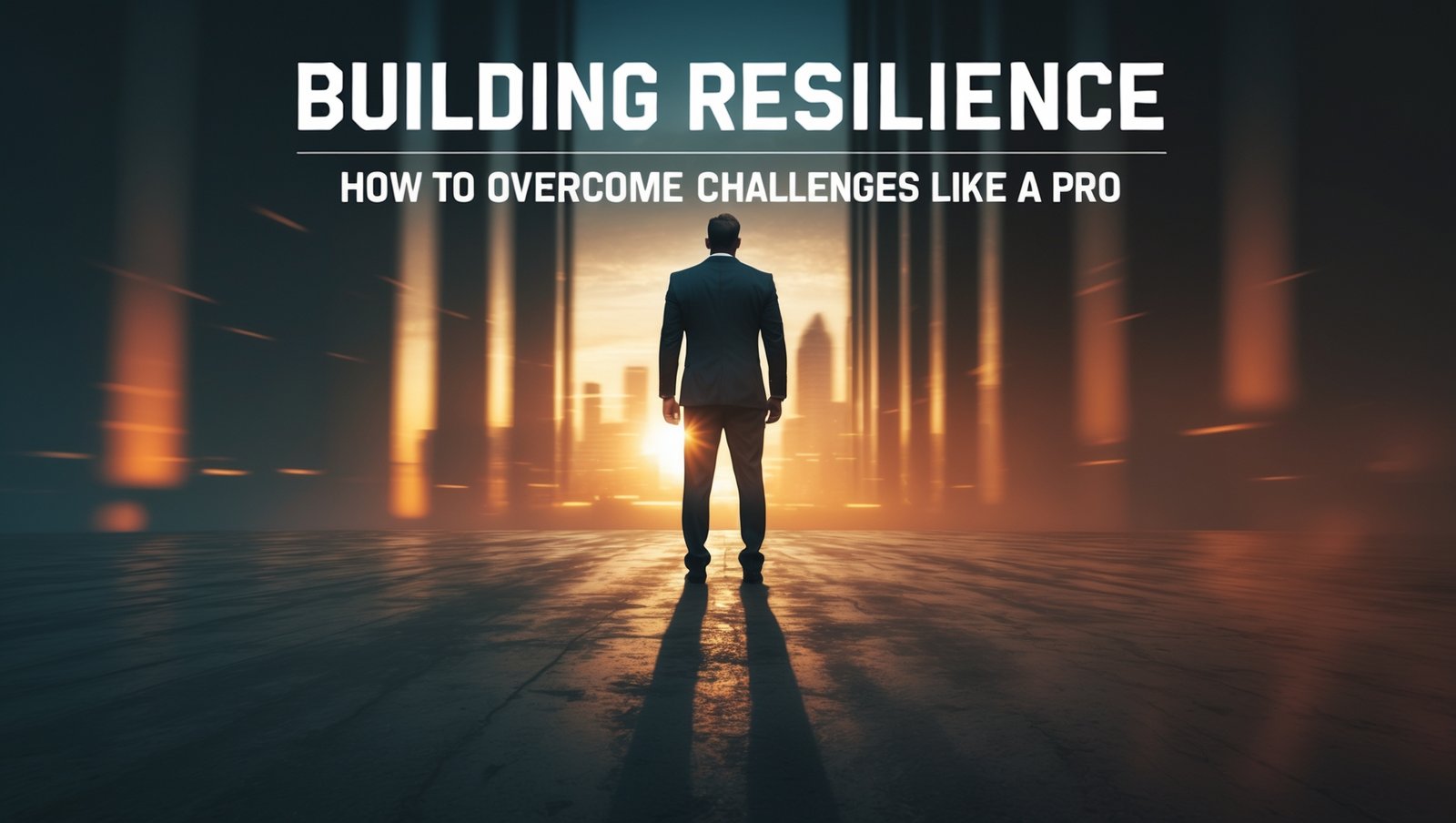
Life is full of challenges—some small, others overwhelming. Whether it’s facing personal setbacks, work-related stress, or unexpected hardships, resilience is the key to overcoming these obstacles. But what does it mean to build resilience, and how can you master this skill to bounce back stronger from life’s difficulties? In this blog post, we’ll dive into the science behind building resilience and provide you with actionable strategies to help you face challenges like a pro.
Table of Contents
Introduction: Why Building Resilience Matters
Have you ever felt like life’s challenges are too much to handle? Maybe you’ve experienced a tough situation, like losing a job, dealing with a personal loss, or facing a major health issue. During moments like these, resilience can make all the difference.
Building resilience isn’t about avoiding life’s hardships—it’s about developing the mental strength and emotional flexibility to cope with them effectively. By mastering this skill, you can reduce stress, stay motivated, and ultimately thrive, even during difficult times.
In this post, we’ll explore what building resilience truly means, why it’s so important for your mental well-being, and how you can start strengthening your resilience today.
Understanding the Problem: What Is Building Resilience?
Defining Building Resilience
At its core, building resilience is the ability to adapt positively to adversity, trauma, or stress. It’s about bouncing back after facing challenges, whether they’re emotional, physical, or mental. Resilience isn’t a fixed trait—it’s something that can be nurtured and developed over time.

Why Building Resilience Matters
Life throws curveballs at everyone, and how we respond determines whether we stay stuck or move forward. The more resilient you are, the better you’ll be at managing stress, recovering from setbacks, and maintaining your mental health in the face of challenges. Resilience allows you to handle stress with a clear mind, learn from difficult situations, and continue striving toward your goals.
The Science Behind Resilience
Building resilience has a strong foundation in psychology. Research shows that resilience is influenced by several factors, including personality, social support, and past experiences. A person’s brain actually changes and adapts when they experience challenging situations, helping them become stronger over time.
For example, studies show that people who experience adversity and learn from it often have better emotional regulation, improved problem-solving skills, and an enhanced sense of self-efficacy (the belief in one’s ability to succeed). These psychological traits are crucial for handling stress in a healthy and productive way.
Real-Life Example
Imagine Sarah, a woman who recently faced a job loss. While initially devastated, Sarah knew she needed to stay focused. She began practicing mindfulness, reaching out for support, and updating her resume. Over time, she not only found a new job but gained valuable skills in resilience that helped her deal with future challenges more effectively.
Actionable Strategies & Solutions: How to Build Resilience
Now that we understand what resilience is and why it matters, let’s talk about how you can actively build resilience in your life. Here are some practical, scientifically-backed strategies you can implement right away.
1. Cultivate a Positive Mindset

Your mindset plays a crucial role in resilience. Research shows that people with a positive outlook on life are more likely to persevere through adversity. Developing a growth mindset—believing that you can learn from setbacks—helps you view challenges as opportunities for growth, rather than as insurmountable obstacles.
How to do it:
- Practice gratitude daily by writing down three things you’re thankful for.
- Reframe negative thoughts into more positive ones. Instead of thinking “I can’t do this,” try “This is challenging, but I can learn and improve.”
2. Build a Strong Support System
No one has to face challenges alone. Social support is one of the most powerful ways to build resilience. Surround yourself with people who lift you up, provide encouragement, and offer advice when needed.
How to do it:
- Reach out to family members, friends, or colleagues when you’re feeling overwhelmed.
- Join support groups or online communities where people are going through similar experiences.
3. Practice Self-Care
Taking care of your body and mind is vital for resilience. When you’re physically healthy, it’s easier to handle stress and recover from challenges. Make time for activities that recharge your batteries, whether it’s exercise, meditation, reading, or spending time in nature.
How to do it:
- Get regular physical activity to improve mood and reduce stress.
- Prioritize sleep and aim for 7-9 hours each night to ensure your body is well-rested and ready to face challenges.
4. Develop Problem-Solving Skills
Resilient people are proactive. They focus on finding solutions rather than dwelling on problems. Strengthening your problem-solving skills will help you deal with challenges more effectively.
How to do it:
- Break down problems into smaller, more manageable parts.
- Look for creative solutions instead of focusing on the roadblocks.
- Reflect on past challenges and how you overcame them.
5. Embrace Change
Life is full of changes, and learning to embrace them rather than resist them can make you more resilient. Being flexible and adaptable to change allows you to stay grounded and move forward when things don’t go as planned.
How to do it:
- Focus on the things you can control, and accept the things you can’t.
- Practice mindfulness to stay present and manage any anxiety that may arise from uncertainty.
The Power of Mindset & Habit Formation

Small Mindset Changes Lead to Long-Term Success
The foundation of building resilience lies in small but powerful mindset changes. Over time, these shifts can have a significant impact on how you respond to challenges. Rather than viewing adversity as something that defines you, embrace it as an opportunity to grow and learn.
Habits and Routines Matter
Building resilience isn’t just about mental strength—it’s also about creating habits and routines that support your well-being. Daily habits like setting goals, practicing self-care, and maintaining a balanced routine can help you stay on track even when times get tough.
How to do it:
- Set daily or weekly goals to maintain focus and motivation.
- Create a morning or evening routine that centers your day around positive habits.
Common Mistakes & How to Avoid Them

When trying to build resilience, people often make common mistakes that can slow down their progress. Let’s look at a few of these and how you can avoid them.
1. Ignoring Your Emotions
It’s easy to push emotions aside, but ignoring them can make things worse. Acknowledging and processing your feelings is key to building emotional resilience.
Fix: Practice mindfulness or journaling to better understand and process your emotions.
2. Trying to Do It All Alone
Many people believe they have to tackle challenges independently, but this can lead to burnout. Resilience is about seeking help when needed.
Fix: Don’t be afraid to ask for support from others. Lean on trusted friends, family, or professionals.
3. Avoiding Challenges
It’s tempting to shy away from difficult situations, but avoiding challenges can prevent you from growing. Facing adversity head-on builds mental toughness.
Fix: Start with small challenges and gradually take on bigger ones as you build your confidence.
Expert Tips & Scientific Insights

Expert Advice
According to Dr. Angela Duckworth, a psychologist known for her work on grit and resilience, “Resilience is not about avoiding failure—it’s about learning how to rise after falling.” Her research emphasizes the importance of perseverance and effort in building resilience.
Scientific Backing
Studies show that individuals with a high level of resilience have better coping mechanisms, lower stress levels, and improved mental health. Psychologists recommend developing emotional awareness and practicing positive self-talk to increase resilience over time.
Conclusion

Building resilience is an ongoing process, but with consistent effort, you can overcome life’s challenges like a pro. By cultivating a positive mindset, strengthening your support system, and practicing self-care, you’ll be well on your way to mastering resilience.
What has worked for you? Share your experience in the comments below and let’s continue the conversation!
FAQs
1. What is resilience?
Resilience is the ability to adapt to adversity, bounce back from setbacks, and keep going even in tough times.
2. How can I build resilience?
You can build resilience by focusing on mindset changes, building a strong support system, practicing self-care, and learning problem-solving skills.
3. Can resilience be learned?
Yes, resilience can be learned and strengthened over time with consistent effort and practice.
4. What are some common mistakes when building resilience?
Common mistakes include ignoring emotions, trying to handle challenges alone, and avoiding difficult situations.





